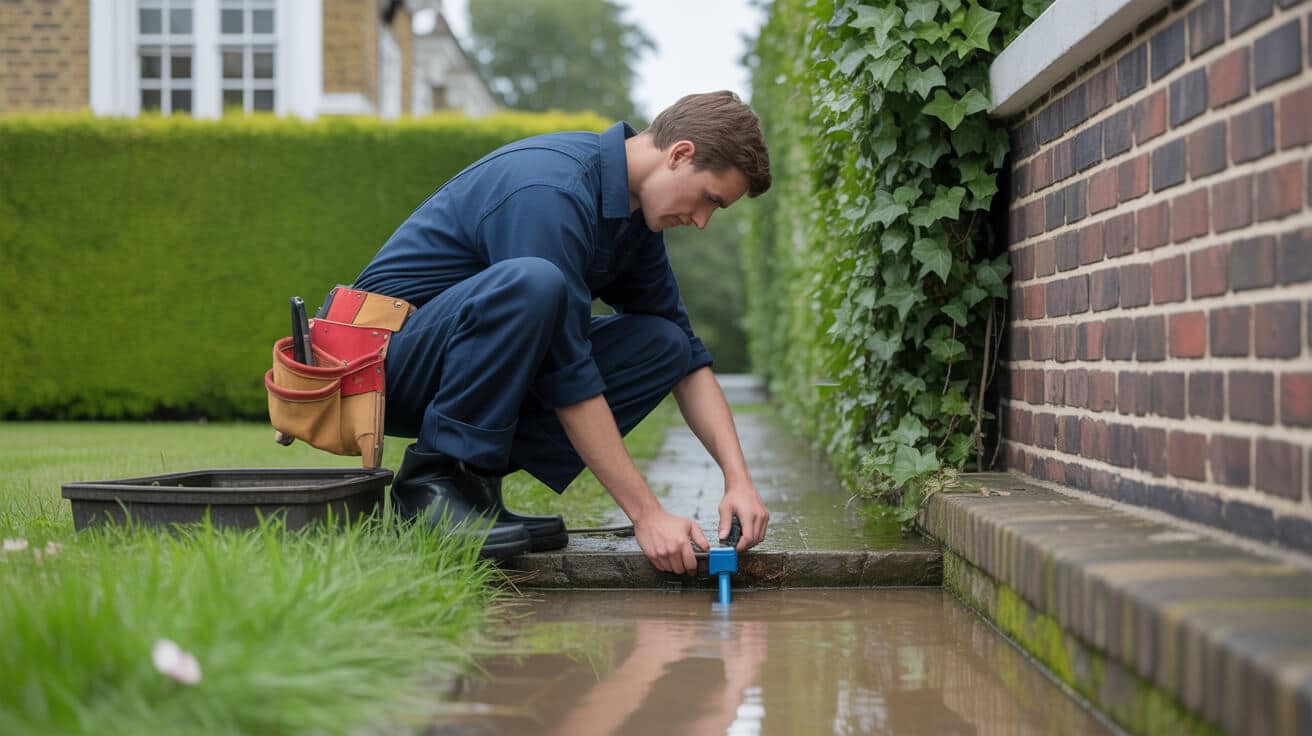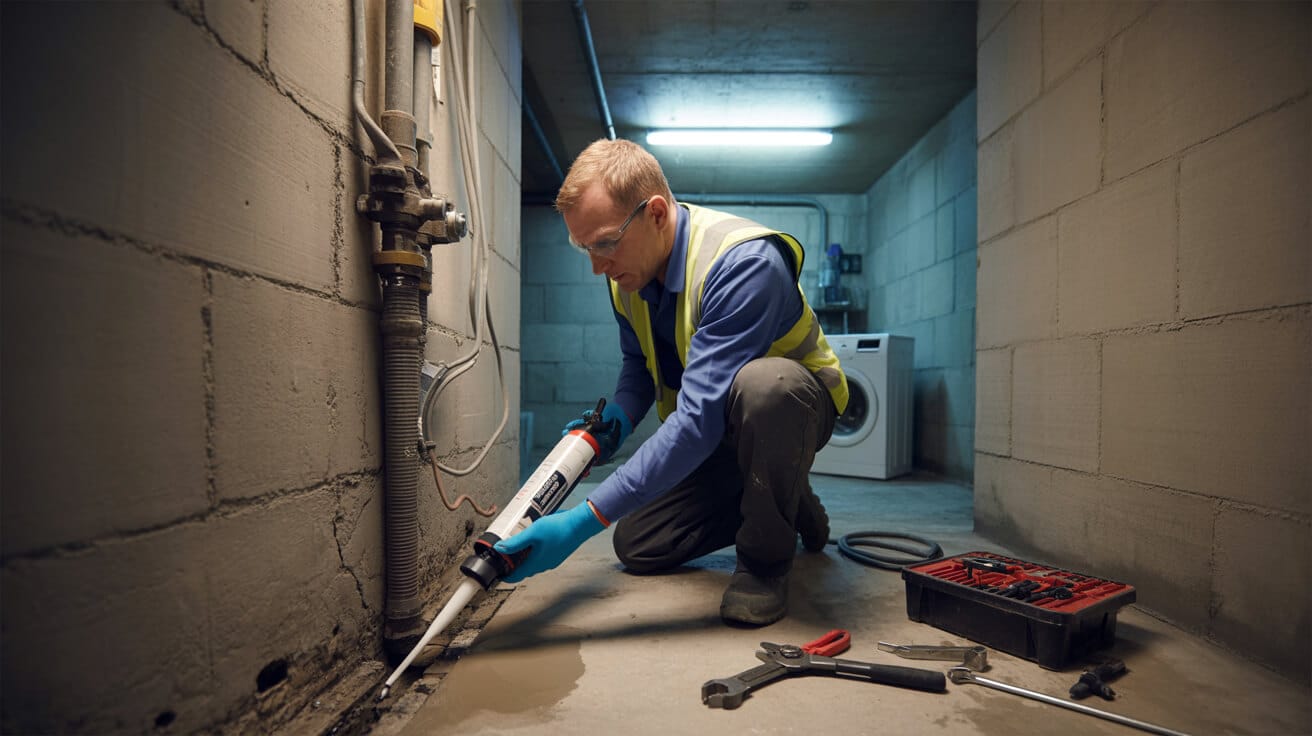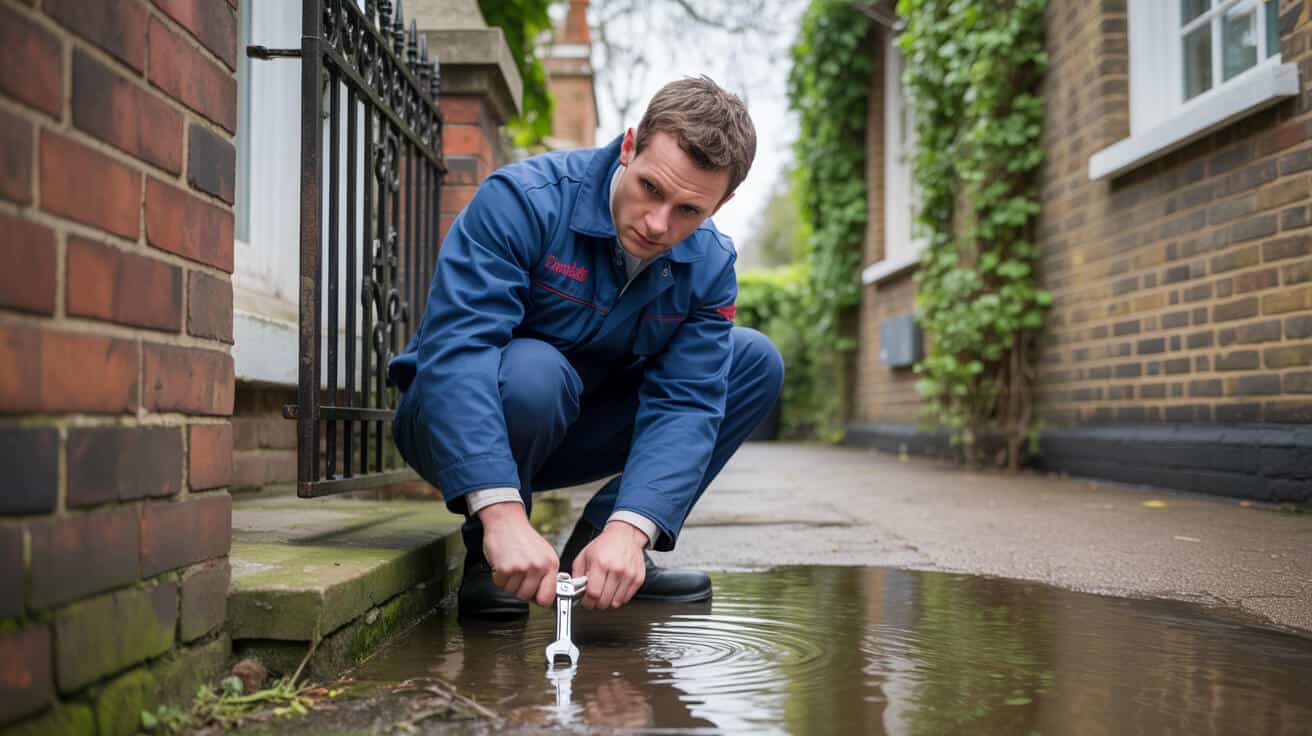 How to Report Plumbing Problems as a Tenant
How to Report Plumbing Problems as a Tenant
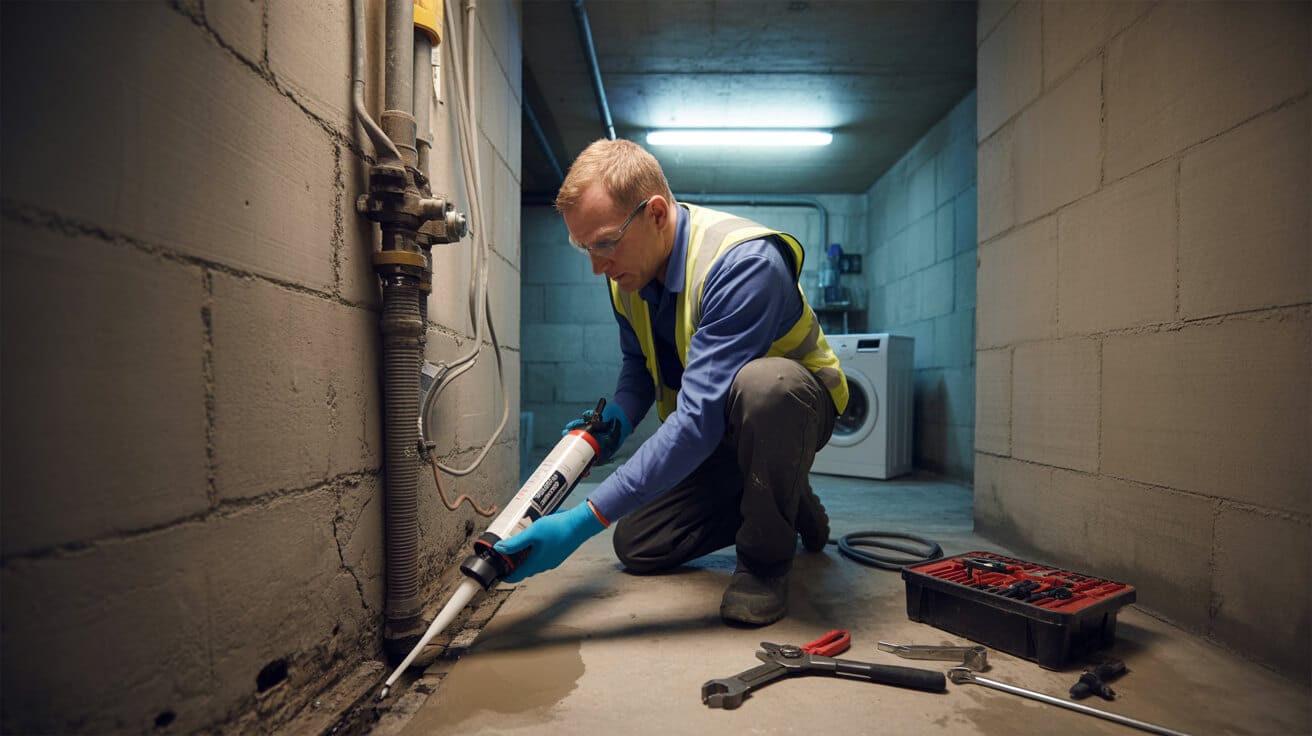
What Really Happens When You Report a Plumbing Problem as a Tenant?
Plumbing trouble doesn’t just cost you comfort; it tests your influence as a tenant. Reporting issues isn’t about nagging your landlord—it’s about defending your deposit, avoiding blame for damage, and keeping your home (or rental property) safe, legal, and healthy. Think you’ll get a fast fix by calling, texting, or waiting? In reality, how you document, escalate, and prove your plumbing problem is what decides the outcome. And those who get clear proof—get repairs, refunds, and rights.
The tenants who document problems own the outcome—everyone else hopes for luck.
It’s a mistake to settle for “fingers crossed” when leaks and blockages could land you with stress, deposit losses, or a property that spirals from workable to unliveable. Whether you’re renting your first flat, managing a portfolio, or acting as point-person for a managing agent, the toolkit here will put you back in control. You’ll know how to force action, create a record landlords can’t ignore, and lock in a paper trail that wins every dispute.
Which Plumbing Problems Must Tenants Report—And Why Even Small Issues Matter?
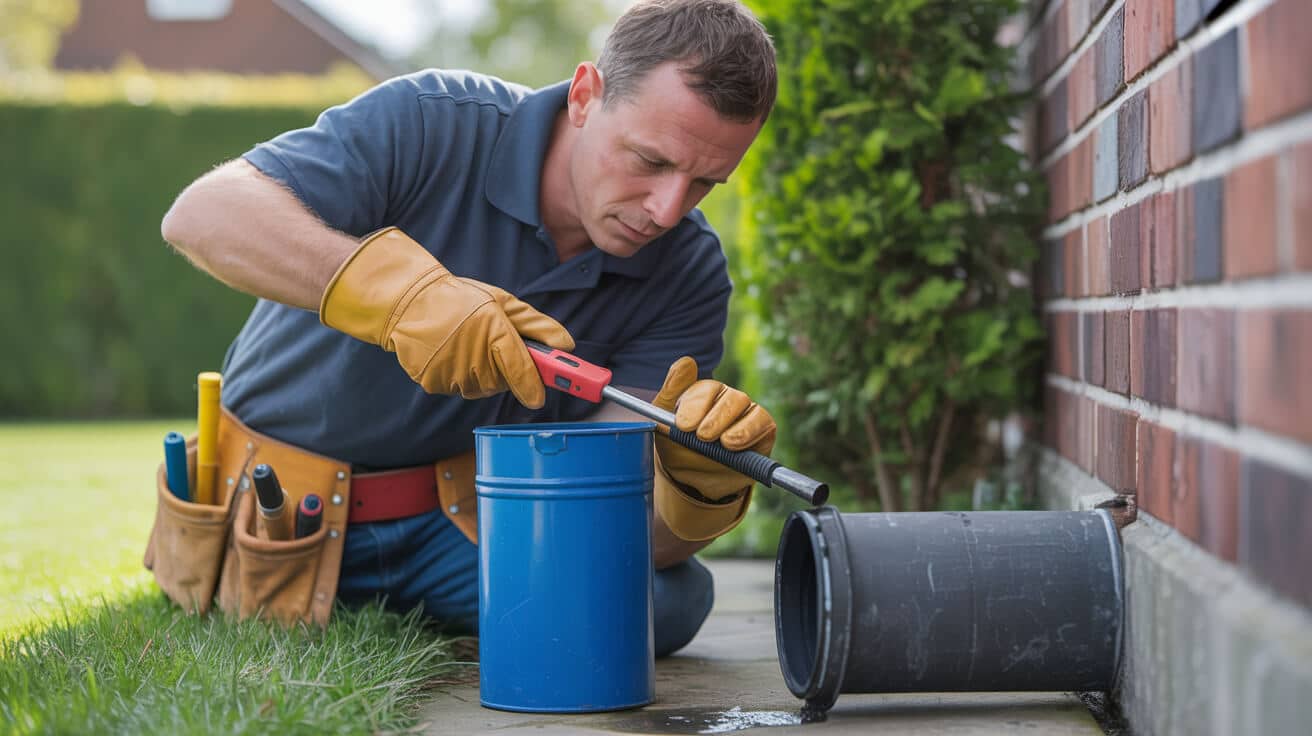
Some issues scream “emergency”—burst pipe, no hot water, shower stuck on cold in December. But property pain rarely shouts. A slow drip, a gurgling drain, even random clunks in the pipes? They seem minor—until ignored faults multiply into damp, rot, hygiene risk, and expensive conflicts over blame.
The Silent Drama of Small Plumbing Faults
Those who wait until “it’s serious” tend to pay most. A “just a drip” kitchen tap wastes more than 5,000 litres per year, risking hidden damage, swelling bills, and sometimes health risks (Shelter UK). And landlords or agents who later see evidence of slow leaks may try to deduct from your deposit, claiming tenant neglect. Pipe noises (“water hammer”), slow drains, or odd flushes? These are early warnings—deal with them upfront, and you often avoid bigger trouble and rows down the line.
Remember: failing to report (or only reporting verbally) can shift liability onto you as a tenant under UK law (Landlord & Tenant Act 1985). Quick word to the wise—any delay can bite you later.
Step One: Document It—Location, Detail, And Impact
- Pin down the location: “Cold feed under kitchen sink,” not just “kitchen leak.”
- Time it: “First seen 14 April, 8:03pm.”
- Log the effect: “Damp patch spreading on floor; towel needed to stop water travelling.”
- Take clear photos (and a short video if possible): It moves your request up the list.
Send this to the right person—never rely on a casual WhatsApp or chat message that gets lost. If in doubt, overcommunicate. The best repairs happen when there’s no dispute about the facts.
If it could lead to damage, it’s not too small—start the record now.
Who Should Tenants Notify—And How Do You Ensure Your Report Gets Due Attention?

Landlords, letting agents, block managers, repairs portals—today’s rental jungle comes with a maze of contacts. The fastest, most effective repairs start with playing by the rules in your contract, and creating a digital “paper trail” your landlord can’t ignore.
Always Check: Who Handles Repairs, And How Do They Want Issues Flagged?
Your tenancy agreement is the blueprint:
- Does it specify an app or email?: Use that route—messages are time-stamped and traceable.
- Which types of faults are “emergencies”?: Severe leaks, loss of water, any risk to health or safety, heating failures in winter—report these boss-level.
- Who is “the responsible person”?: If in doubt, email all—landlord, agent, and any property manager.
- Are there explicit “out of hours” contacts?: Use these for big issues, but always follow up with a written, detailed report containing your timestamped photos.
Not sure who’s in charge? Fire off a short, direct email:
I want to confirm the official channel for plumbing repairs. Who should I contact for emergencies and ordinary issues?
Getting their answer in writing sets the countdown timer for repairs—plus, it’s your evidence if disputes arise.
Written Beats Verbal: Here’s Why Calls Aren’t Enough
By law, only written reports shape timelines. Phone calls are easily forgotten, unheard, or denied later—even by well-meaning landlords. Instead:
- Emails, portals, or app tickets: are time-stamped and build a “paper trail.”
- They make your first report the evidence, not just a shout into the void.
- Official channels switch the legal responsibility—and keep your deposit safe if things turn ugly.
If you must call during a leak or major problem, back it up immediately, in writing: “Just confirming our phone call today at 10:30am regarding the leak under the bath. Photos attached. Please confirm the next steps.” If problems drag on, this is gold dust.
Landlords race to fix the issues that land formally in their inbox, not the ones left as voicemails.
What Does a “Perfect” Tenant Plumbing Report Look Like—and Why Does It Matter?
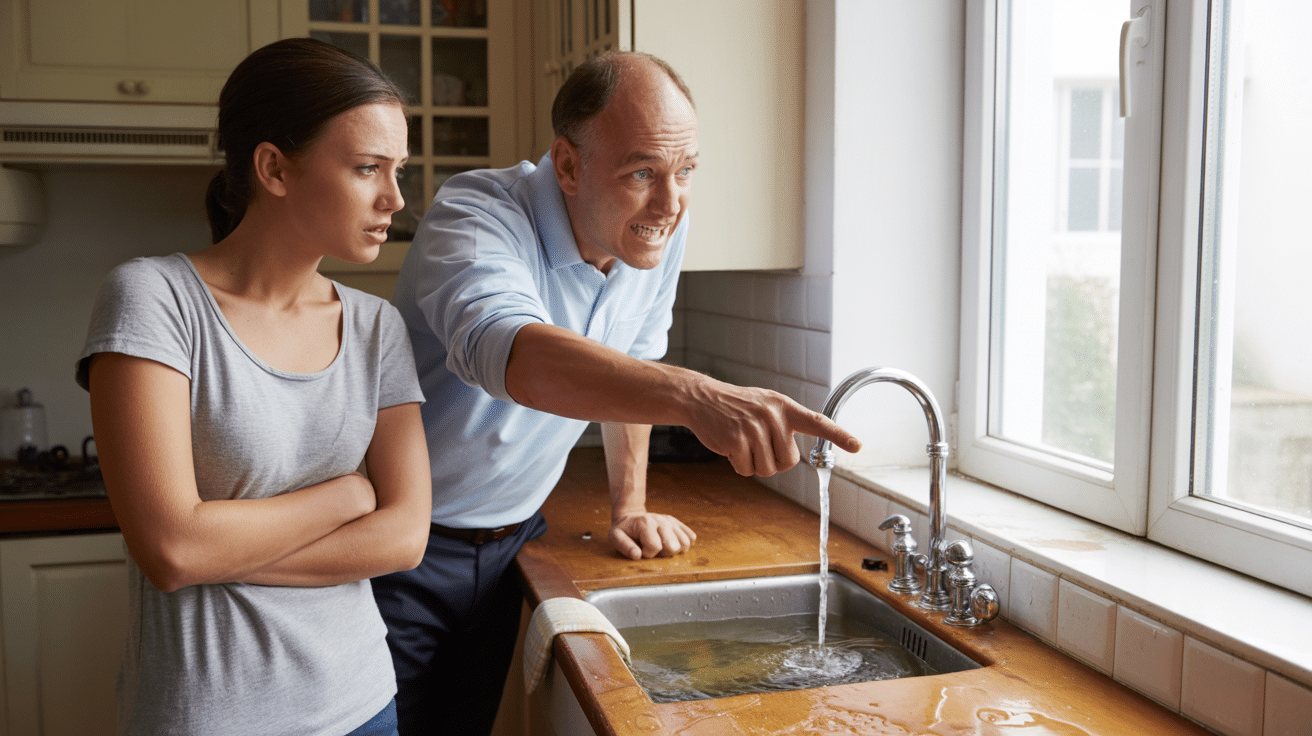
If you want a fast, professional repair, skip the drama—give all the info an engineer or manager needs, right from the off. Rambling, vague, or emotional messages drop down the queue. Clear, evidence-backed requests travel straight to the top.
The Anatomy of a Repair Request That Gets Action
- Exact location: “Downstairs toilet, behind the cistern,” not just “bathroom.”
- Describe what’s wrong: “Slow, steady drip at supply pipe joint; puddle forming on tiles.”
- Attach photo(s) or a 10-second video: Engineers diagnose in seconds; managers can see urgency.
- Timeline and reporting: State when you first noticed the problem and when you reported it.
- Impact: “Putting towels down each night, concerned about floor damage.”
- Fault history: “Similar issue last September, plumber replaced joint.”
- Archive all replies: Screenshot and file every exchange—this timeline is your shield if you need to chase or go to tribunal.
Quick-Access Template
Hi [Landlord/Agent], I’m reporting a plumbing problem at [address]: • Description: [‘Leak under kitchen sink’] • Location: [‘Left cupboard’] • Noticed: [Date & time] • Photo attached Please confirm receipt and repair timescale.
A message like this removes ambiguity, triggers the legal repair clock, and demonstrates you’re a model tenant.
If you want results, show you’re structured, specific, and backed by evidence.
How Can Tenants Prove Their Report Was Sent—and the Landlord Was Notified?

Sending is one thing. Proving it (especially after a broken promise or if the repair is ignored) is everything.
- Email or repairs portal: Use official systems. Save auto-replies, ticket numbers, and confirmation messages—they are timestamps and audit trails.
- After any phone call: Summarise the call in writing:
“Just confirming—from today’s call with Sarah at 1pm about the slow leak under bathroom sink.”
- Attach media: Photos and videos aren’t just for landlords; they’re your proof at deposit time.
- Ask for written confirmation: “Please confirm you have received this and what happens next.”
- Store every message, photo, and reply: in a folder you don’t delete until your deposit is safely returned.
Landlords may try to claim “I never got that message,” especially when repairs drag on. Your digital trail wins every time.
Which Method Is Fastest for Plumbing Repairs?
| Method | Proof Level | Response Speed | Use for Emergencies? |
|---|---|---|---|
| Repairs app/portal | Highest | Fastest | Yes (with phone call backup) |
| High | Fast | Yes (back up urgent calls) | |
| Phone call (only) | None | Varies | Only as backup—not standalone |
| WhatsApp/SMS (only) | Low | Slow | Not recommended |
A quick call at midnight during a flood matters—but always follow up by hitting send on your written, time-stamped report.
If your repair history isn’t in your inbox, it didn’t happen.
What Are Your Legal Rights If a Landlord Drags Their Heels on Repairs?
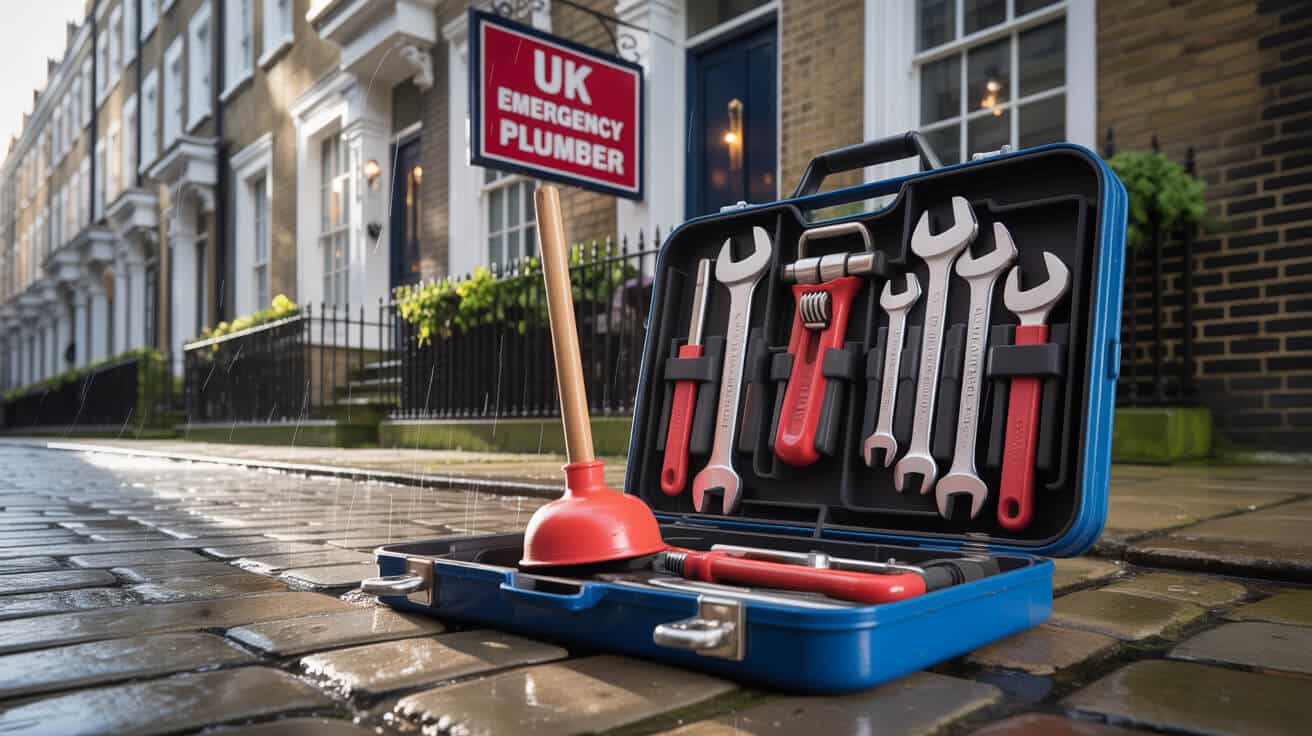
Your landlord can’t legally sidestep plumbing duties. Section 11, Landlord and Tenant Act 1985 makes it a must: “keep in repair and proper working order the installations in the dwelling-house for the supply of water, gas, electricity, sanitation, space heating and heating water.” Any private tenancy (whether assured, shorthold, or regulated) is covered—no contract can override it.
UK law expects your property to be safe, with sinks, WCs, and supplies all working—delay is not negotiable.
How Soon Should Plumbing Repairs Begin—and What Are “Reasonable” Timelines?
| Plumbing Issue | Standard Response Time | Escalation Trigger |
|---|---|---|
| Severe leak, water off, no WC | 24–48 hours | If ignored >48h |
| No heating/hot water (winter) | 1–2 days | If ignored >2 days |
| Minor leak, trickle, slow drain | 7–14 days | If ignored >14 days |
Tenants are never obliged to pay for repairs except for self-caused damage or deliberate neglect. Wear, tear, or faults from use or age are the landlord’s problem.
If your landlord stalls, reference the law clearly and keep your trail watertight:
Please note, under Section 11, Landlord & Tenant Act 1985, you are responsible for plumbing repairs. Here is my full evidence record and prior requests.
How to Build a Knockout Evidence Trail That Can’t Be Disputed
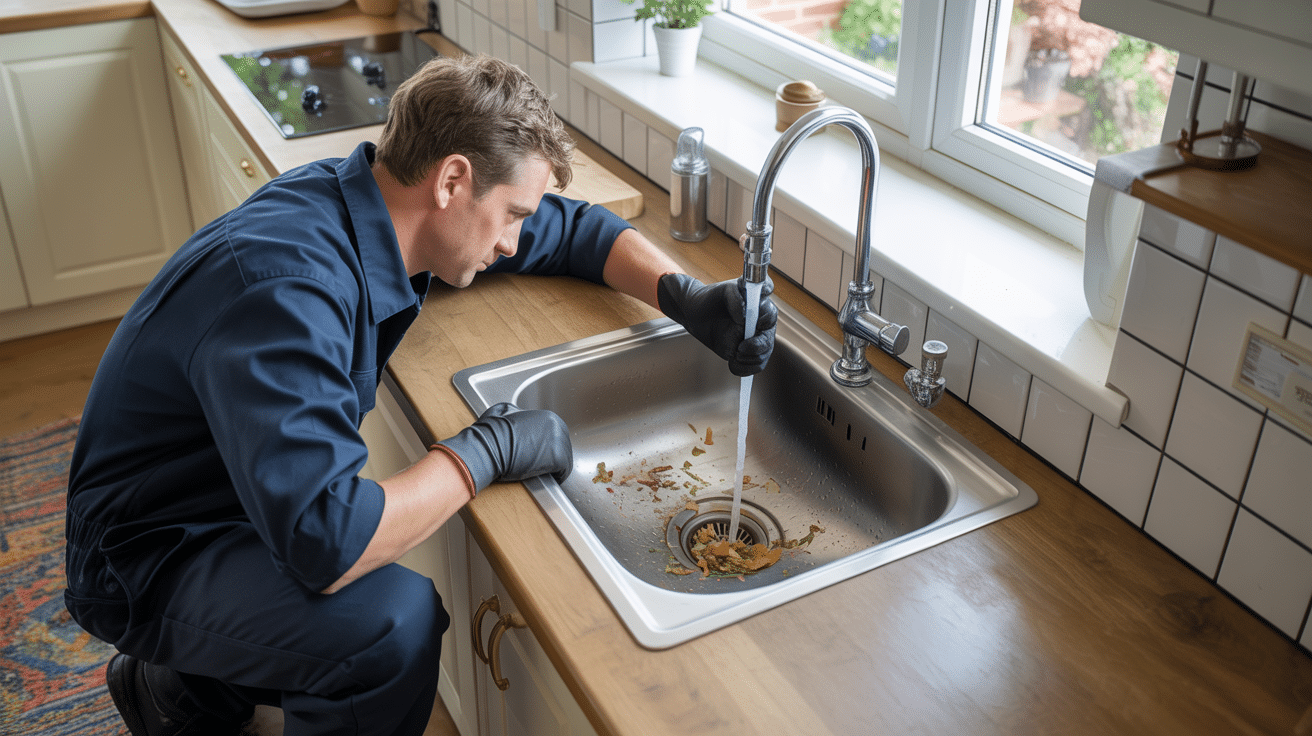
Savvy tenants keep a running log—not just for arguments with landlords, but for insurance claims, local council involvement, or even when rent deposit schemes step in to adjudicate. Each reply, ticket number, and photo is an asset.
The Tenant’s Evidence Checklist
- File all repair emails/tickets: together for instant recall
- Note dates, times, and names: from every reply—even “Will check next week” is worth logging
- Attach photos and receipts: for every plumber visit or failed fix
- Don’t edit or ‘clean up’ the trail: —messy history is better than missing proof!
- Politely chase and reference your previous reports: if you get silence after 48-72 hours
A professional, methodical record usually ends disputes fast, keeps your deposit intact, and helps if you need local council help. The more you control the record, the less power a landlord has to blame or delay.
Tenants who archive everything rarely lose a repair or deposit argument.
What Steps Can You Take If Plumbing Repairs Aren’t Done—Even After Reporting?

Silence isn’t golden—it’s risky. If there’s no update or work scheduled after your first detailed request:
1. Send a written follow-up, quoting dates and attaching all evidence.
2. Make sure all stakeholders get it—landlord, agent, block manager.
3. Reference your legal rights and prior email trail.
4. For hygiene, flooding or health hazards: escalate to your local council’s Private Sector Housing Team. They must act if property conditions become unsafe—even if you’re mid-tenancy.
5. For absolute emergencies (floods, shared bathroom fail, uncontrollable leaks), council Environmental Health may order work or authorise you to get emergency repairs.
Do not hire your own engineer for bigger jobs unless you have written, documented landlord consent. Otherwise, you risk paying the bill yourself or creating insurance headaches for all sides.
The persistent, polite, and well-documented tenant almost always wins—without ever raising their voice.
Why Landlords and Agents Trust Plumbers 4U—And How Their Reports Protect Tenants
Sometimes, landlords or agents request you arrange the call out—especially out of hours or during serious faults. Here’s where the difference between a handyman’s scribbled invoice and professional, standards-based documentation becomes clear.
Plumbers 4U: Professional Repairs + Proof for Your Deposit
Plumbers 4U backs tenants (and landlords) by making every repair an open-and-shut case:
- Before and after job photos: create evidence, emailed to both tenant and landlord.
- All fittings and work certified: WRAS, G3, WaterSafe—protecting safety and compliance.
- Upfront written quotes: , clear schedule, no “hidden extras” or pressure.
- Official, itemised documentation: meets deposit scheme and insurer requirements.
- Records stored by Plumbers 4U: if you move or switch agents, nothing falls through the cracks.
- No sales pressure or upselling: —plumbing fixed, evidence issued, deposit shielded.
That’s why experienced landlord and letting agencies ask for Plumbers 4U—instead of risking an insurance or deposit disaster.
If the work’s not documented, it’s not finished. Proof protects everyone involved.
The Fastest Route to Stress-Free, Documented Repairs—With Plumbers 4U
Don’t let leaks, heating failures, or water issues slide: your comfort, your deposit, and your property value are always at stake. The tenant who logs every fault, writes every report, and keeps the trail organised gets their fix first—and stands unshakeable if disputes arise.
If time is tight or proof is everything, Plumbers 4U brings WRAS-Approved, G3-certified engineers who fix what’s wrong, produce real documentation, and protect your rights. No excuses. No “missing files.” Just before-and-after evidence, itemised reports, and every standard, checked.
Every problem spotted, every step proven—control your repairs and secure the outcome you deserve.
Frequently Asked Questions
Why do boundaries between landlord and tenant plumbing responsibilities change so frequently in UK rentals?
Responsibility for plumbing repairs in UK rental properties isn’t a static rule—it’s a shifting line shaped by contract details, lived realities, and how quickly both sides respond when trouble hits. Landlords are expected to cover all structural plumbing—pipes, cisterns, taps, drainage, water heating—unless tenant actions directly cause damage by misuse or neglect. But that clear boundary can blur fast if a tenant waits too long to report a slow leak, refuses reasonable access, or if a misunderstanding about what’s “reasonable wear and tear” arises. The law, anchored in Section 11 of the Landlord & Tenant Act 1985, defaults to landlord duty for anything not caused by the occupier, while tenants are obliged to use fixtures sensibly and alert landlords or agents quickly.
The right to a safe, working plumbing system doesn’t mean you abdicate responsibility—what you ignore could end up on your tab.
Where does the boundary get tested most?
- Accidental damage or long-neglected issues.: If a pipe bursts because of gradual freezing, yet the tenant never reported a cold spot or draught, the repair might become contentious.
- Neglecting basic care.: Pouring oil down the sink or flushing wipes may push the cost back onto the tenant.
- Urgent situations.: If a landlord is unreachable in a genuine emergency, tenants aren’t expected to wait at the expense of their health or property—but documentation is king.
Transparent communication and real-time, written reporting help both parties protect their rights if arguments over responsibility ever arise. For homebuyers-turned-landlords and experienced property managers alike, the needle moves where clarity is absent and only facts fix it. Reviewing your contract, referencing Citizens Advice or government guidance, and leaning on trusted service providers like Plumbers 4U streamlines the process and protects everyone’s interests.
How does documenting a plumbing fault change your chances of a fast, fair rental repair outcome?
Your first written report, not your phone call or hallway mention, is what starts every repair clock and influences how quickly faults are addressed. A clear, time-stamped log—preferably with photos or video—is your single best tool for ensuring landlord action, rapid insurance response, and eventual deposit protection. The UK’s repair landscape increasingly expects even routine complaints to be managed through portals or email, because these create an audit trail no one can dispute.
The difference between reliable documentation and casual reporting? It’s often the gap between same-week repairs and months of unwanted stress.
Which steps strengthen your evidence?
- Send a detailed written description the moment you notice the issue—date, time, and where (e.g., “cold water supply pipe under kitchen sink leaking from compression fitting, 11:40am, first noticed on 2 May”).
- Add well-lit, focused photos or short video clips that demonstrate the problem and any spread (damp, stains, or pooled water).
- Log all personal actions: did you turn off the stopcock, prevent further water damage, alert the letting agent or block manager?
- Request and save acknowledgment: “Reply to confirm receipt, or reference number if using a portal.”
UK deposit protection schemes, local authorities, and insurance adjusters nearly always prioritise cases with a robust timeline and visual backup. Even if you speak first in person or phone, follow with something in writing. In short: digital evidence equals real-world influence.
Who uses these methods?
From tenants defending against unfair deposit deductions to landlords tracking recurring leaks, those who document everything spark faster, more reliable outcomes—no matter which side of the renting equation they’re on.
Which UK laws and expectations shape how quickly a landlord must fix plumbing issues?
Landlords must act on plumbing issues in a “reasonable” timeframe, but “reasonable” morphs with circumstance—think frozen pipes in winter, families with children, or water shut off at the mains. Emergencies—like loss of sanitation, active major leaks, or failed heating in cold conditions—are expected to be addressed inside 24–48 hours, as supported by NRLA guidance and recent case outcomes. Less urgent jobs, such as slow-flow taps or a minor dripping valve, are usually slotted within 7–14 days, but delays stack up quickly if the tenant’s evidence shows persistent unresolved damage.
What gets you priority? Clear urgency in your digital report, and evidence of risk to health or property.
What drives—and sometimes delays—repairs?
- Severity and risk.: burst pipes, shutdowns, or loss of sanitation win a next-day response; slow leaks or minor trickles rarely do.
- Quality of your evidence.: Specificity and photos propel your case to the top.
- Season and property type.: Winter and high-occupancy buildings often see faster responses, but also the longest backlogs.
- Agent or landlord responsiveness.: Large letting agents may rely on slower ticketing systems, while hands-on landlords might deliver faster fixes—if the case is well made.
- Tenant vulnerability.: Involvement of children, elderly, or health-risked tenants can accelerate intervention.
Are there scientific targets?
A 2022 Citizens Advice study found properties with detailed photographic evidence were serviced, on average, three days faster than those with vague or phone-only reporting. That’s real leverage, and a reason to treat even simple repairs with the formality of a legal contract.
If dangerous or health-impacting problems linger beyond the emergency window, escalate directly—as deposit damage and future legal risk land squarely on the landlord’s ledger after the documented deadline passes.
What is the best escalation path when plumbing repairs are ignored or only half-completed in UK rentals?
When property repairs aren’t attended to, escalation is a process—not a standoff. The sequence is non-negotiable: document, notify, follow up, then escalate. If a repair is attempted but leaves the system unsound, gather proof and clarify which part remains unresolved with both words and visuals. Only then should you bring in backup—letting agents, block managers, or, as a last resort, local council environmental health officers.
A methodical escalation—backed by calm persistence and airtight evidence—trumps noisy disputes every single time.
Stepwise strategy for smooth escalation
- Start with a polite follow-up referencing your original report, appending all evidence and any new symptoms or systemic risks (“overflow repaired, but flushing still fails”).
- Save every response—or lack thereof—and document any repeat or spreading damage as new evidence.
- After a second polite push (ideally within 48 working hours for emergencies), involve your managing agent, landlord association, or block manager by copying them into your chain.
- If health is at risk, or after the prescribed urgent repair window, furnish your full timeline to the local Private Sector Housing team or Environmental Health. Councils act swiftly when children, illness risk, or vulnerable individuals are involved.
What should you never do?
Do not withhold rent or threaten payment delays without written professional advice—those actions risk legal exposure far beyond the original problem.
How do landlords benefit from understanding this?
Taking the lead with documentation and prompt responses reduces nuisance escalation, legal demand, and reputational hit. Agents who equip both tenants and landlords with transparent processes see higher satisfaction and lower conflict rates.
How do smart tenants prove a landlord received their plumbing fault report and took (or missed) action?
In today’s dispute-driven repair world, the communication trail is the legal spine of your argument. Written, time-stamped contact—plus a reply or reference—cements landlord accountability and helps you win any future claim. Online reporting portals, dedicated apps, or even simple email chains create traceable, verified histories much more trustworthy than anecdote or memory.
If you can’t timestamp your message and show a landlord reply, it often never happened—or never gets compensated.
Practical ways to lock in proof:
- Use dedicated repair portals that log submission times and create ticket references. If not available, fall back to email (preferably with read receipts).
- Attach updated photos and brief explanations after each development; this layering builds your case if things escalate.
- For phone or in-person updates, send a summary email: “Following our call at 3:20pm regarding the failed flush, attached is a photo as discussed.”
- Keep every WhatsApp, text, or message log in the cloud until repairs are confirmed and your deposit returned.
- Store a scanned or photo copy of your inventory and inspection forms—these are vital for proving pre-existing conditions.
Insurance companies, local councils, and deposit arbitrators now expect this level of tracking. Without it, you risk weaker negotiation footing or outright denial of a claim.
When are tenants legally justified in hiring their own plumber and seeking repayment—and what makes a claim likely to succeed?
UK tenancy law makes clear: you don’t have to weather out a health- or safety-risking plumbing disaster just because the landlord’s on holiday or not answering. If urgent water leaks, failed toilets, or non-stop mains shutdowns threaten health or property, you are legally allowed to act—provided you create a meticulous record and allow a fair response window. The secret to success? Written warnings, time-stamped quotes, certified work by a WRAS- or G3-qualified engineer, and a complete, collated evidence pack for reimbursement.
Emergency repairs are only as good as your process—only a compliant, traceable fix stands up in deposit or legal disputes.
The evidence-backed process for tenant-led repairs:
- Submit written reports marked “urgent”—including both description and photos. Cite clear deadlines (e.g., ‘respond by 11am or I’ll arrange a safety-compliant repair’).
- Secure two quotes where practicable; notify the landlord of cost choices.
- Use only certified professionals (WRAS-/WaterSafe-approved or G3 for cylinders). Get before and after photos, engineer’s report, and all receipts.
- After repairs, submit a claim for costs or, with deposit scheme or Citizens Advice sign-off, request a rent deduction.
- Store and back up your evidence pack—digital and hard copies—until all financial matters are settled.
What increases your odds of getting costs recovered?
- Adherence to guidance from specialist organisations (Shelter, Citizens Advice, council).
- Use of approved emergency callout services like Plumbers 4U, who automatically provide regulatory paperwork and dispute-ready documentation.
A 2023 Leasehold Knowledge Partnership survey shows that cost recovery claims failed 45 % of the time due to missing paperwork or non-certified repairs. Playing by the book is the only route to a successful outcome.
For seamless assurance, trusted providers deliver more than a fix—they’re your legal parachute when health and property are at genuine risk.
How does choosing certified plumbing professionals like Plumbers 4U transform the stakes for tenants and landlords?
Regulation isn’t just bureaucratic noise—it’s armour. Using certified, WRAS- and G3-approved contractors like Plumbers 4U means every repair delivers photographic proof, digital job logs, and warranty-protected compliance paperwork that satisfies landlords, tenants, councils, and insurers alike. This closes the gap between what’s fixed and what’s proven, giving landlords clear evidence for Section 11 defence and deposit protection, and providing tenants with powerful leverage in future disputes or claim escalations.
An ordinary repair is forgotten; a documented fix, entered into the right chain, keeps you above the debate for years.
Tangible benefits delivered by certified services
- Deposit security: Evidence-backed repairs and compliance certificates smooth full-return deposit claims.
- Property value confidence: A log of compliant, professionally executed repairs raises both immediate value and future buying or letting credibility.
- Health & safety assurance: Rapid, correct response minimises the spread of damp, water-related disease, or long-term structural damage.
- Insurance and dispute proof: Validated job logs are what authorities and insurers look for first—especially if there’s a claim.
- Operational peace of mind: Knowing engineers will explain their process, label every repair, and leave both sides with the right documents takes stress off everyone involved.
Plumbers 4U offers direct routes to WRAS-compliant reports, digital audit trails, and repair templates—ready for upload to landlord or deposit schemes. For property owners with compliance at front-of-mind, and tenants guarding their hard-won rights, certified service is the single most strategic choice available.
Book a WRAS-approved visit or download evidence templates with Plumbers 4U—let your next repair become your strongest compliance shield.

